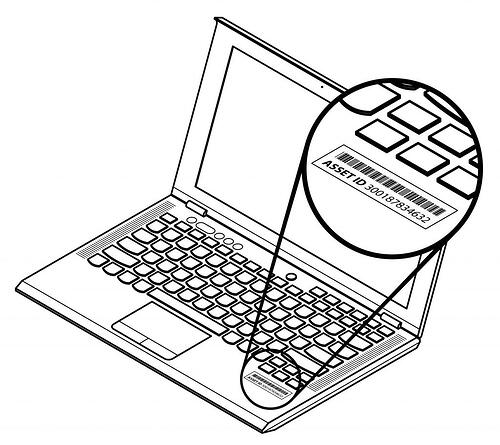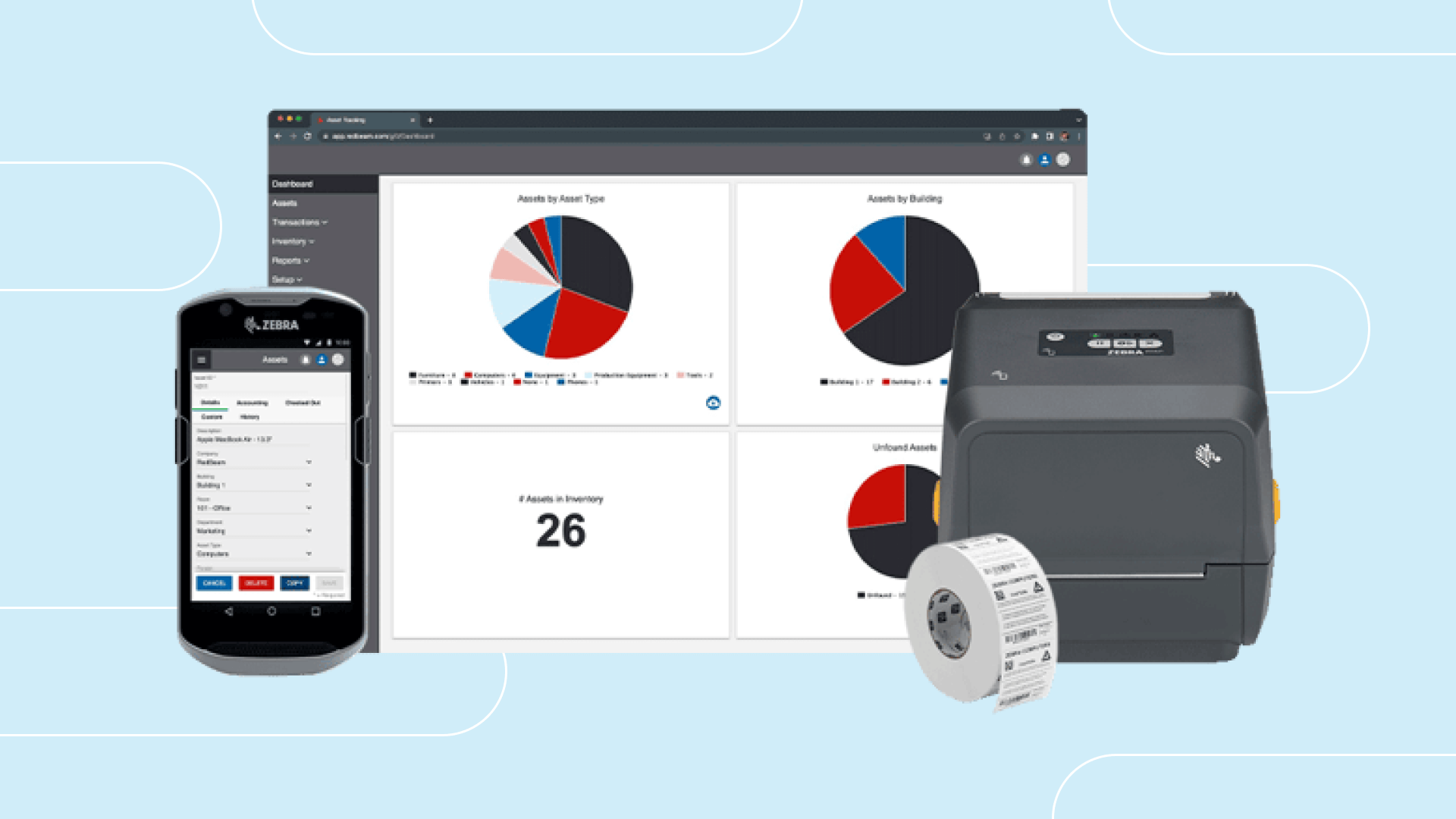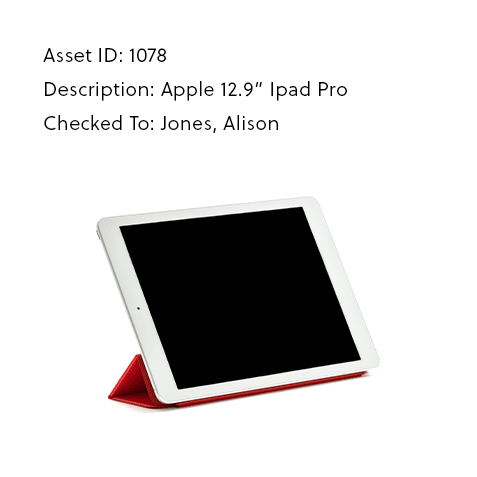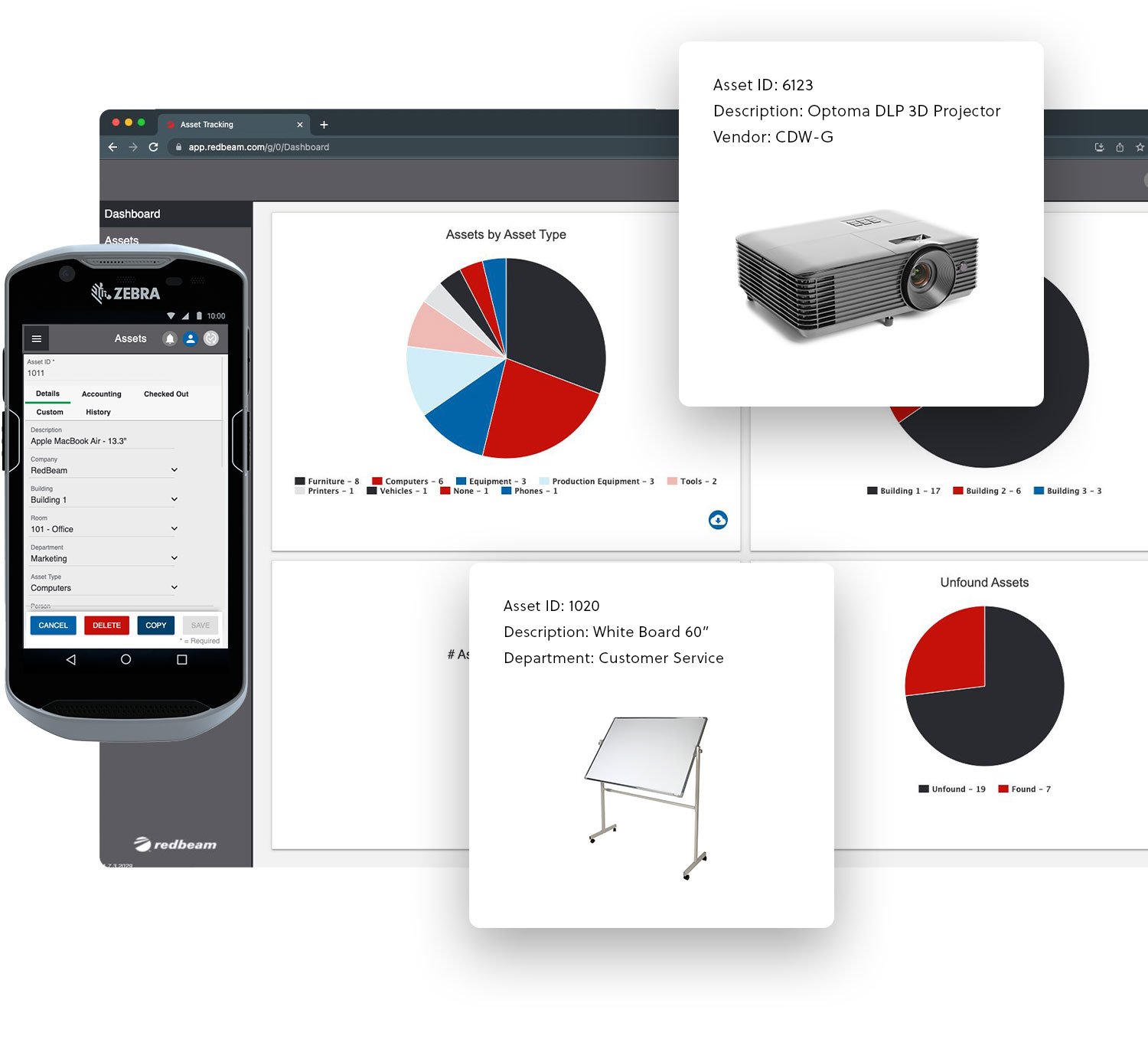In this guide, we’ll explore the best practices, strategies, and tools that can help you implement equipment inventory management effectively and transform how you manage your equipment inventory.
Laptops are easily misplaced, sometimes stolen, and always a headache to keep secure and updated. If your school, government agency, or healthcare organization struggles to keep track of these expensive devices, laptop asset tags could be the answer. Laptop asset tags are an easy and efficient way to keep track of your company's IT equipment. They are small, durable labels that can be affixed to each laptop, providing a unique identification number for each device. This allows you to easily monitor and manage your laptops, improving each device’s lifecycle and reducing costs. In this article, we will discuss everything you need to know about laptop asset tags, what they are, why they are useful, and how to use them best. By the end of this post, you'll have a solid understanding of how laptop asset tags can revolutionize how your company or school manages its laptops. What are laptop asset tags? Laptop asset tags are literal tags fixed to each piece of computer equipment that helps identify them. When scanned, users can see and update information about the device. They typically contain either QR codes or barcodes that can be scanned using a smartphone or specialist device. While you can get RFID (Radio Frequency Identification) asset tags, these tend not to be suitable for laptops due to the amount of metal in them. Even laptops with a plastic case can create interference that weakens your ability to scan the tag.

The material of your laptop asset tag makes a big difference. Laptop tags can be stickers. These are the most cost-effective option, you can print them on-site, and they are easy to apply. However, they can be tampered with, peeled off, or destroyed — even if you use a clear film overlay to protect them.
Metal asset tags are more secure and durable asset tags. These are much harder to tamper with or remove, although they can be significantly more expensive if applied to several hundred laptops.
Benefits of using laptop asset tags
There are several benefits to using laptop asset tags in schools, government agencies, or private businesses.
Theft, either intentional or accidental (such as when an employee leaves a company), is a common occurrence with laptops. But laptop asset tags help to prevent this by creating a record of who had the laptop last. A functional asset tracking solution makes it easy to track who had a laptop last and identify which assets an employee has that need to be recovered before they leave.
Using laptop asset tags to record data in a single location doesn't just prevent theft, though. It also helps IT teams eliminate human error when tracking laptops and speed up the inventory management process. For example, if laptops are due for a software update, it becomes easy to find out exactly where they are. The time saved finding physical assets can be almost as valuable as the money saved replacing stolen laptops.
Laptop asset tags generate significantly more data than traditional, manual tracking methods. You can learn far more than which student or employee checked out each laptop, such as when the laptop was last updated, what make and model it is, which applications it runs, its condition, and much more.
With this data in hand, IT teams can forecast when laptops will need to be updated, repaired, or replaced and better allocate their budget accordingly. Many of these processes can be automated with reports generated periodically that highlight which machines need attention.
In many cases, laptop asset tagging will help to extend the life cycle of your equipment. For example, laptops can be updated and patched more regularly, and issues such as broken screens can be fixed before they become serious enough to require a total replacement.
When to use asset tags for computers
There are several use cases where asset tags for computers and laptops are a sensible choice.
In the education sector
Laptops, Chromebooks, and iPads are core educational tools in 21st-century schools. But they're no use to teachers or students if they go missing or get broken. That's why using barcode or QR code-based laptop asset tags is vital to track your equipment effectively.
Using laptop asset tags, you can forgo messy manual methods or overly complicated spreadsheets and use asset management software instead. The upshots are far fewer tracking errors, less theft, and better insights into how laptops are used and distributed.
In hybrid or remote offices
Any business environment where laptops are regularly removed from premises should make laptop asset tags a priority. A check-in, check-out service may be the best solution. By scanning laptops as they are given to employees, you can record the condition of the laptop and who is taking ownership of it. This provides a paper trail in case the device goes missing and also allows you to send reminders to employees to return the laptop when finished.
For fixed assets
Fixed computer devices like desktop computers, printers, and scanners should also have asset tags that allow your business to record the equipment's location, condition, and other key information. Just because the device doesn't move from your premises doesn't mean asset tracking isn't worthwhile, far from it.
You can still use tags to run an asset audit to understand the state of equipment you have on-site when it is due for a service, and when it may need to be replaced.
How do you track laptop asset tags?
Asset tracking laptops and other computer devices work in the following ways:
Create asset tags and affix them to laptops
Start by identifying all of the laptops and other types of IT equipment you want to track. Ideally, you’ll already have a database of your equipment, but it may be necessary to run an inventory first.
Next, create a unique code (either in barcode or QR form) for each asset, print the label, and affix it clearly to each device. Make sure the code can be seen clearly on the laptop — either the top of the case (so it can be seen when closed) or the space next to the laptop’s trackpad are suitable areas.
Use a specialized reader or smartphone app to scan laptops
Depending on the asset tracking software you use, you will either be able to use a specialized reader or a smartphone to scan the code on each laptop.
![]()
When doing so, you can start to enter key information, such as the laptop’s make and model, the operating system it runs, any relevant applications installed, and its condition.
Manage everything with asset tracking software
Depending on the size of your organization, you could have anywhere from a few dozen to thousands of laptops that need to be tagged and tracked. A spreadsheet is no place to keep track of things at this scale, which is why the final step in the asset tagging process is to manage everything using asset tracking software.

Asset tracking software acts as a centralized database for all the information about your laptops. You can see detailed information about each device, as well as broader reports about the overall state of your total assets. For example, that could include seeing how many laptops are outstanding, which laptops are due for updates, and which departments are using the most laptops.
Asset tracking software should work regardless of which kind of laptop asset tag you use, whether a barcode, QR code, or even an RFID tag.
4 best practices to improve laptop asset tags
Added asset tags for each piece of equipment
You’ll want to establish digital intensities for each piece of IT equipment. That means treating a single solution like a desktop PC as several separate parts. In other words, you’ll want to create a barcode for the monitor, the keyboard, the mouse, and the CPU. That’s because it’s relatively straightforward to replace one monitor with another without impacting the usability of the computer — and so it makes sense to treat each part individually.
Alternatively, you could label each part of the device with the same barcode sticker, creating a single unit in your records. This means fewer overall entries to manage, but it does mean having to store significantly more information in each entry.
Make labels easy to see
Make sure labels are clearly visible on laptop and desktop devices. In an ideal world, you'll have at least two barcodes on each laptop — one on the front, visible when closed, and another next to the trackpad, visible when the laptop is open.
Having several labels that are easy to see reduces the risk of vandalism and also makes it easier to scan each laptop. Not having to open every single laptop can save a significant amount of time when scanning dozens or hundreds of units in one go.
Perform audits regularly
Whether you are tracking school or company assets, regular audits can avoid nasty surprises at the end of a school year or an employee’s. For starters, a regular audit ensures that the device remains with the owner and acts as a deterrent to theft. It also allows you to keep up-to-date notes on the condition of the laptop. You can even use this as an opportunity to make software updates or install new applications.
Go beyond owner identity
There’s no limit to the amount of information you can track using laptop asset tags when combined with asset tracking software. As such, you should record a range of data, including who has the laptop, what operating software it runs, when it was purchased, when it was updated, and the condition of the laptop.

The more data you have, the easier it is to understand how laptops are used in your organization, which laptops need to be updated, how many laptops may need to be replaced in the year ahead, and how long laptops will last on average.
Tracking computer asset tags with software
Your success with laptop asset tags can hinge on the quality of your software. When combined with an asset tracking device, the right software solution will allow you to quickly record and report on the state of all your laptop devices.

Not just any software solution is suitable, however. Just like when choosing software for your laptops, it’s important to consider ease of use for your employees. Opt for a system that makes it easy for your team to find and record data and run reports on the status of laptops.
You may also want to consider other key features like:
- A mobile-ready solution, so you don’t need to invest in hardware
- Web-based applications that allow remote access
- Secure data storage
- Role-based access
- Detailed history
- Smart data import
RedBeam’s asset management platform comes with an intuitive interface. Any changes are clearly logged so you can see each asset’s full history. It is also available on smartphone devices, making it easy to scan barcodes and record information.
Track laptops with RedBeam
Laptop asset tags are essential for any school, business, or government agency that provides laptops to staff or students. They help you prevent theft, increase the lifecycle of laptops and save money.
At RedBeam, we have the expertise to help companies create asset tagging systems for any kind of computer device. Our unique asset tracking software makes it simple to keep track of all your devices in one place.
Find out more about how we can help by scheduling a demo today.


-3.png?width=2000&name=Untitled%20design%20(1)-3.png)






